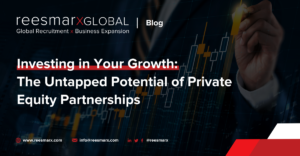Work-life will never be the same. People think it will all go back to the way it was before The Great Resignation, but it won’t. Employers may be misjudging just how much life has changed for their employees in the past few years. Overwhelming work and life conditions, even before the pandemic, have led to physical and emotional exhaustion. Many studies are showing that burnout has been the kick that has led people to leave their posts and even the workforce altogether. Why are people experiencing burnout? Understanding the why is the goal for leaders in businesses so that they can hedge these problems and retain their top talent. People are our biggest business asset, and they have now realized it and are acting accordingly— it’s time for business leaders to take them seriously. So how can leaders navigate and avoid the pitfalls of The Great Resignation? Below are five steps that successful businesses follow that are not only good ethics but also great for the bottom line.
1) Know how burnout happens.
Contributing factors to The Great Resignation were plenty— wage stagnation, cost of living crisis, job dissatisfaction— disruptors that were already going on before the pandemic. The biggest disruptors have COVID-19 as the catalyst— safety concerns surrounding the pandemic and then the move to hybrid working spurred and even sped up what was already coming. People began to reflect and review their jobs and their lives. They then sought better salaries and working conditions elsewhere since they weren’t able to get it where they were employed. Increased job opportunities (and increased digital access to those widespread opportunities) have shifted the power over to the hands of the employees and candidates for employment.
People have now had a taste of freedom. They want that flexible working life without the overwhelming stress. There’s no going back now.
2) Know why burnout happens
How can we tell when people are connected and enthusiastic about their roles and their productivity is optimized? People measurement. Measure your people’s experience like you do business success. It will save time, money, and effort. How do you entice retention with the right employee benefits without knowing what is required of the staff? Use the people measurements to put a strategy in place for any issues. Understand your people. There are tools out there to measure your people to find the weaknesses in the system, and there are solutions that can mend the weak and broken points.
Many times, these solutions are about life outside of work. We now realize that we cannot clock in and out of life— people carry their lives into their work. Therefore, it makes sense that focusing on mental health in the workplace is key to a positive work experience. Stress and depression are strong predictors of high turnover. It ultimately affects job satisfaction and drives the employee’s intention to leave their employment. We must never forget that an employee’s psychological needs must be met to achieve high performance. If people don’t feel safe, then the nervous system kicks in and makes them aware that they are under threat. We cannot expect high performance from people when they are in survivor mode. People need to be in thrive mode to succeed in work and life. If we feel safe and valued, we feel secure, and that’s when we can thrive.
3) Focus on key risks and solutions.
After learning about your people, analyze the results. It may not always be work-related causes of stress. Even if the risks and solutions concern personal life, companies still need to alleviate that stress to increase productivity and avoid burnout. This doesn’t have to be a monumental change. It could be through targeted interventions and small tweaks. One concern may be a lifestyle factor with the solution encouraging staff to monitor heart rate and track sleeping patterns or physical activity levels. It’s the right thing to do but also good for business.
4) Invest in your people.
People are the fuel that drives your organization. An employee can generally cope with a high workload if the resources outweigh the demands of their role. Remember that resources don’t always have to be salary-related. Invest in your staff to understand their own health. Create a framework that optimizes your people’s work-life experience, one that respects people and leads to increased job satisfaction and retention of good talent. This, in turn, optimizes both your business goals and your financial returns. Experience is highly valuable in business, but now with The Great Resignation, we are seeing a steep decline in experience. Put strategies in place to retain your strong talent in this candidate-driven market. The phenomenon is real and your organization’s leaders need to be prepared for the shift by investing in the people.
5) Continuously measure wellbeing.
Measure your people throughout their employment and identify ways to retain staff at each phase of their career, from onboarding forward. There may be common themes of work-related stress based on length of employment. Look for patterns and adjust your framework and system to suit. Then build a framework for your investment and watch your bottom line grow…
Overall, transparency and communication are key. Recognize your top talent and communicate their value to the company. Even if their individual measurements don’t raise any red flags, they may be a passive candidate being actively pursued by another company. Understand your essential team members— show them consistently how they are essential to the growth of your company. These candidates who aren’t valued either become head-hunted, company morale-killers, or another statistic in The Great Resignation. Making employees feel valued is vital to retaining top talent and increasing the chances of success for your business.
You will always have people leaving the company, but you need to maintain that framework and system with adequate resources. Culturally, employees have a waning loyalty to companies, but it will take some time for the pendulum to swing back towards a more ideal, shared loyal relationship between employer and employee. Employees are now empowered, and they will drive positive change for themselves and their employers. The dust from this whirlwind will settle. There will eventually be an understanding of this new way of working.






